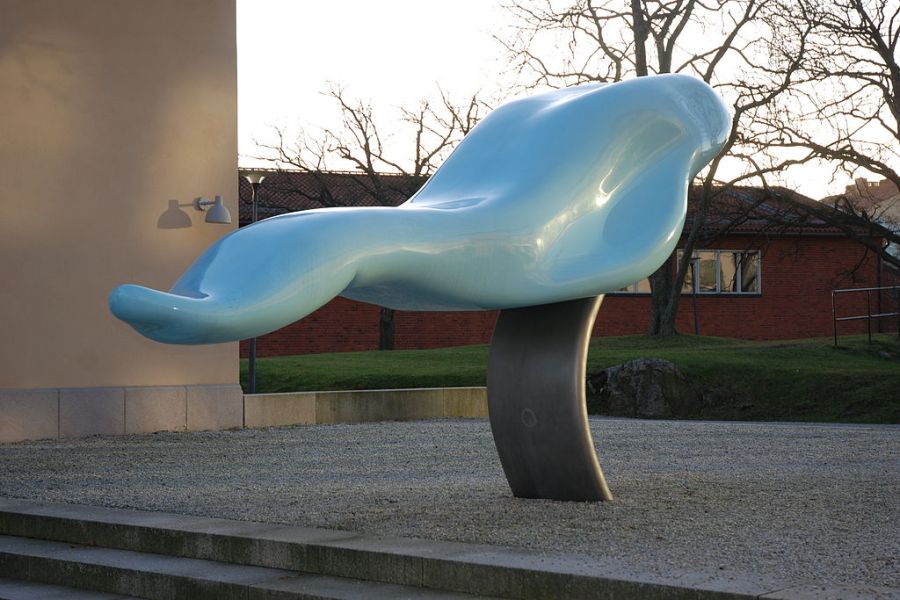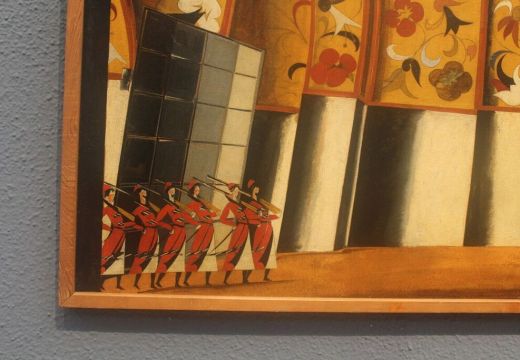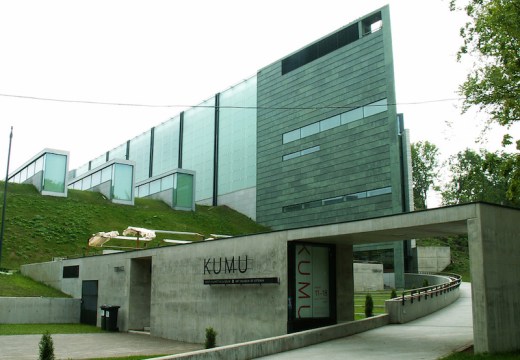With an average of 1.8 billion pictures uploaded to the internet every day, it is something of a truism to say that we live in a digital age. As the open dissemination of images increases across the globe, museums and other cultural institutions have been remarkably proactive in their response. Last year, Hamburg’s MKG made freely available digital images of its entire collection. Earlier this year, the Rauschenberg Foundation announced a new and very generous fair use policy. In April, the US Supreme Court found in favour of Google that the scanning and free release of selected book snippets was fair use and did not infringe on the copyright of publishers or authors. But a recent court case involving Wikimedia Sweden has underlined an unresolved, and increasingly urgent, question. Who owns the rights to public art?
The case in Sweden seems to fly in the face of the prevailing winds. But, as ever with art and copyright, it’s complicated. The facts of the case are these: in June 2014 Bildkonst Upphovsrätt i Sverige (BUS), a Swedish association that represents artists in issues relating to copyright and royalties, filed a lawsuit against Wikimedia Sweden. The subject of the suit was Offentligkonst.se, an open map and database made up of descriptions and photographs of works of public art across Sweden.
BUS has argued that this constitutes copyright infringement and that the affected artists should be paid. BUS points out that Wikimedia refused to sign a licensing agreement for ‘just a few hundred euros a year’. The association’s press release notes: ‘Wikimedia has instead chosen to spend tens of thousands of euros on lawyers to avoid it.’
For its part, Wikimedia sees this is as a battle over the erosion of public space and the rights of the public in that space. ‘It is true that we have refused to pay a license fee to Bildupphovsrätt,’ Wikimedia Sweden’s operations manager Anna Troberg tells me via email, ‘but we believe that public art should be accessible to the public without restrictions.’
Troberg continues: ‘We also feel strongly that art that has been financed with taxpayers’ money should be accessible to taxpayers. We have all already paid for the art once, so it is strange to think that we should have to pay for it over and over again.’
Magdalena Malm, director of Public Art Agency Sweden, the body who originally commissioned many of the works in the database, sums up the dilemma perfectly: ‘It is vitally important that people can take pictures in the public realm, but also that artists get paid fairly for their work.’
Unfortunately for Wikimedia, the Supreme Court sided with BUS. The full ruling (available, naturally, on Wikimedia) spans seven pages and seeks to decide between public interest and the economic rights of the artists. The court declared that Wikimedia does not have the right ‘to communicate photographs of works of art permanently placed outdoors from its database to the public via the internet. Whether the disposal has a commercial purpose is irrelevant.’
The decision has provoked widespread media coverage, with most outlets criticising the decision and speculating about the potential implications for public space – both physically in our cities and online. The Guardian, for example, wrote that tourists sharing selfies at famous landmarks ‘could be deemed in violation of copyright laws’.
Those closer to the case have been much more circumspect. All legal decisions have repercussions of course, but so far the main agreement is that it is hard to predict what they might be. Wikimedia, which warned about the potential impact of the ruling, has subsequently clarified that it seems to be limited to Offentligkonst.se specifically. That said, Henrik Bengtsson of law firm Delphi, who are representing Wikimedia in this case, tells me that ‘potentially the same rules would apply to buildings. So any comparable online database might be required to pay the architects.’ But, he says, ‘there is however no real collecting society for architect…’
For BUS, this dispute is part of a larger fight for the rights of the individual artist against ‘the big players on the internet’. ‘We really like Wikimedia,’ stresses Erik Forslund, head of negotiation at BUS. ‘We think their database is a great idea, but the key thing is that the artists should be paid fairly.’ With over 3,000 works on the Offentligkonst map, payment for each work could be as little as 30 cents per year. But these small payments mount up. BUS collects approximately SEK10.5 million (£900,000) per year in licence agreements and permissions (of which 20 per cent goes to fund BUS).
With annual revenues of $75 million, Wikimedia is certainly a ‘big player’, but unlike, say, Google, it is also a non-profit foundation. Google, however, may be next in the firing line. ‘This ruling is a very important first step for us to move forward with other big fish,’ says Forslund when I ask about Google Street View. ‘We certainly want to have an agreement with them, but we will need international co-operation with our sister organisations in other countries. We’re working on that at the moment.’
As the repercussions of this case ripple out through time, one thing is certain: this won’t be the last time that the laws of copyright come into conflict with the free sharing of digital content that we’ve been encouraged to embrace.
‘I do not think this will be the last case like this,’ says artist Eva Hild, whose sculpture Binär outside the government offices on Jakobsgatan in Stockholm, was one of three works at the centre of the case. ‘Maybe the whole system for economic compensation needs to be updated in the long run. More will come and changes will be made.’
Unlimited access from just $16 every 3 months
Subscribe to get unlimited and exclusive access to the top art stories, interviews and exhibition reviews.














![Masterpiece [Re]discovery 2022. Photo: Ben Fisher Photography, courtesy of Masterpiece London](http://www.apollo-magazine.com/wp-content/uploads/2022/07/MPL2022_4263.jpg)
It’s time for the government of London to return to its rightful home